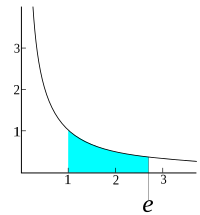
Photo from wikipedia
When encountering sedimentary rocks with obvious laminations or fracture development zones, the conductivity of the conductive medium in different directions will change significantly, and the subsurface medium will exhibit macroscopic… Click to show full abstract
When encountering sedimentary rocks with obvious laminations or fracture development zones, the conductivity of the conductive medium in different directions will change significantly, and the subsurface medium will exhibit macroscopic conductivity anisotropy. To analyze the impact of electrical anisotropy on the surface–borehole transient electromagnetic exploration method, we used the finite element method to investigate the electrical anisotropy surface–borehole transient electromagnetic three-dimensional (3D) forward algorithm, in which we used a tetrahedral mesh to spatially discretize the time–domain Maxwell equation. Then, we discretized it using the second-order backward Eulerian difference method, and we obtained the fields through the PARDISO solver. The validity and correctness of the algorithm were verified through comparison of a one-dimensional (1D) anisotropic model, a complex three-dimensional (3D) isotropic model, and a three-dimensional (3D) anisotropic half-space model. A typical anisotropic geological model was constructed to analyze the effects of anisotropic strata and anomalies in the different principal axis directions on the surface–borehole transient electromagnetic response. The results show that the response of the anisotropic medium is related to the direction of the transmitting source, and the response pattern is complex and volatile. The electrical anisotropic anomaly does affect the amplitude, which should be given special attention when performing surface–borehole transient electromagnetic inversion interpretation.
Journal Title: Minerals
Year Published: 2023
Link to full text (if available)
Share on Social Media: Sign Up to like & get
recommendations!